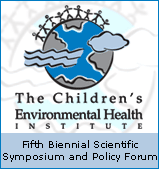| Prospective Pregnancy Study Designs for Assessing Reproductive and Developmental Toxicants Germaine M. Buck,1 Courtney D. Lynch,1 Joseph B. Stanford,2 Anne M. Sweeney,3 Laura A. Schieve,4 John C. Rockett,5 Sherry G. Selevan,6 and Steven M. Schrader 7 1Epidemiology Branch, National Institute of Child Health and Human Development, National Institutes of Health, Department of Health and Human Services, Rockville, Maryland, USA; 2Department of Family Preventive Medicine, Health Research Center, University of Utah, Salt Lake City, Utah, USA; 3Department of Epidemiology, Texas A&M University Health Science Center, School of Rural Public Health, Bryan, Texas, USA; 4Division of Reproductive Health, National Center for Chronic Disease Prevention and Health Promotion, Centers for Disease Control and Prevention, Atlanta, Georgia, USA; 5Gamete and Early Embryo Research Branch, Reproductive Toxicology Division, National Health and Environmental Effects Research Laboratory, Office of Research and Development, U.S. Environmental Protection Agency, Research Triangle Park, North Carolina, USA; 6National Center for Environmental Assessment, Office of Research and Development, U.S. Environmental Protection Agency, Washington, DC, USA; 7Reproductive Health Assessment Section, Division of Applied Research and Technology, National Institute for Occupational Safety and Health, Centers for Disease Control and Prevention, Cincinnati, Ohio, USA Abstract
The determinants of successful human reproduction and development may act as early as periconceptionally, underscoring the need to capture exposures during these critical windows when assessing potential toxicants. To identify such toxicants, couples must be studied longitudinally prior to conception without regard to a couple's ability to ascertain a clinically recognized pregnancy. We examined the utility and feasibility of prospective pregnancy study designs by conducting a systematic review of the literature to summarize relevant information regarding the planning, implementation, and success of previously published prospective pregnancy studies. Information concerning design elements and participation was abstracted from 15 eligible studies (from a total of 20 identified studies) using a standardized form. The primary author of each study was contacted to review our summary of their work and obtain missing information. Our findings confirm the ability to recruit women/couples from diverse populations using a variety of recruitment strategies. Among the studies we reviewed, 4-97% of eligible individuals were successfully contacted, with enrollment rates ranging from 42 to 100%. Length of follow-up varied from 3 to 12 months. A high percentage of women provided urine (57-98%) and blood (86-91%) specimens and most male partners (94-100%) provided semen samples. These data support the feasibility of this design. Key words: design, development, fetal, preconception, pregnancy, prospective, reproduction, toxicity. Environ Health Perspect 112:79-86 (2004) . doi:10.1289/ehp.6262 available via http://dx.doi.org/ [Online 24 September 2003]
This article is part of the mini-monograph "Understanding the Determinants of Children's Health." Address correspondence to G. Buck, Epidemiology Branch, NICHD, NIH, DHHS, 6100 Executive Blvd., Rm. 7B03, Rockville, MD 20852 USA. Telephone: (301) 496-6155. Fax: (301) 402-2084. E-mail: gb156i@nih.gov We thank the principal investigators of the prospective pregnancy studies included in this review for their pioneering work and generous time devoted to answering our many inquiries. In addition, we acknowledge members of the Fertility and Early Pregnancy Working Group, National Children's Study, for their critical review of this work. The views in this article reflect those of the authors and not necessarily those of their affiliated institutions. The information in this document has been subjected to review by the National Health and Environmental Effects Research Laboratory (U.S. EPA) and approved for publication. Approval does not signify that the contents reflect the views of the Agency, nor does mention of trade names or commercial products constitute endorsement or recommendation for use. The authors declare they have no competing financial interests. Received 6 February 2003 ; accepted 2 September 2003.
The full version of this article is available for free in HTML or PDF formats. |

